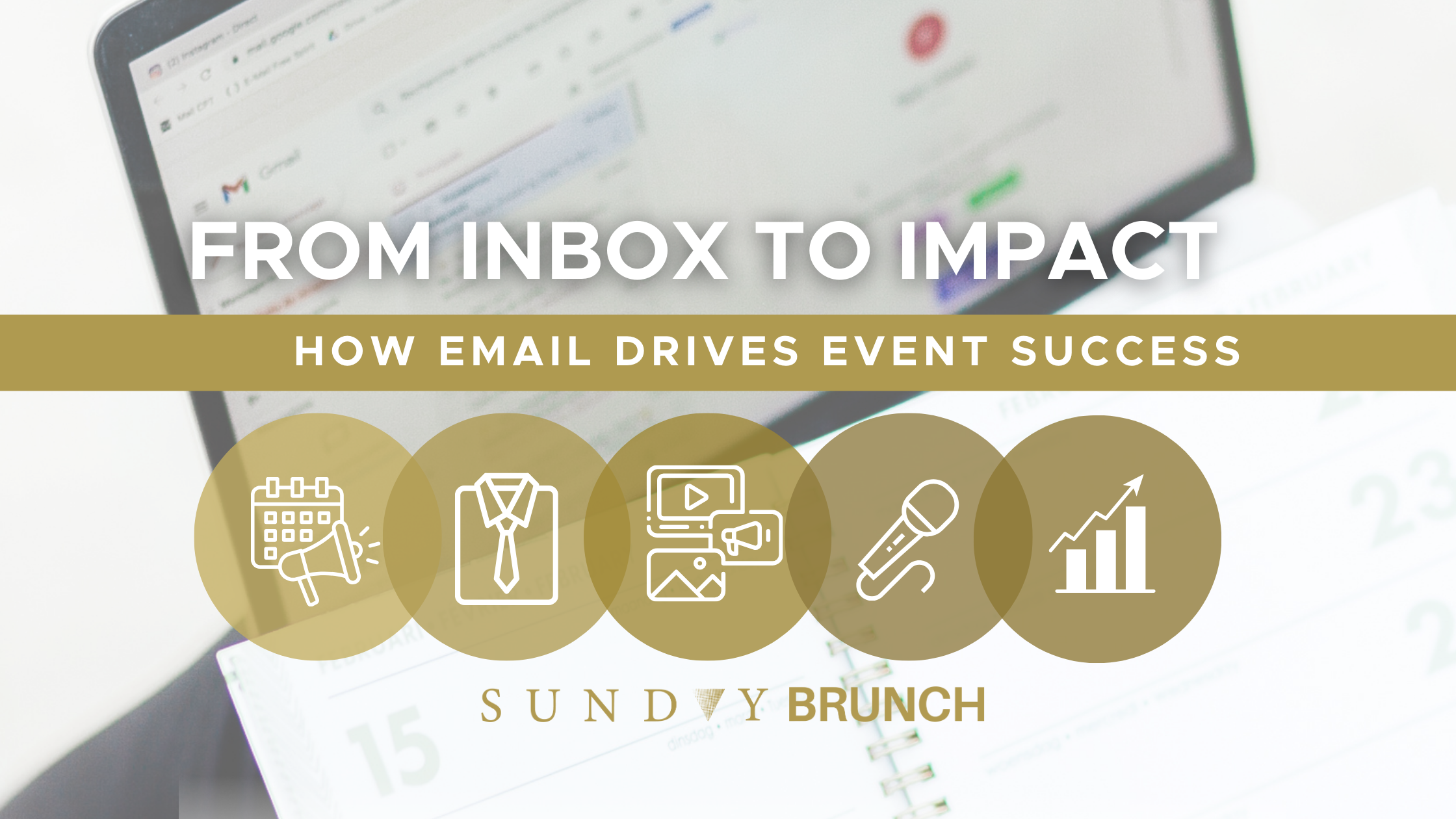How smart Email Strategy Fuels EventSuccess
In an era dominated by social feeds and digital advertising, many business owners overlook one of the most effective tools for event success: email. While platforms like Instagram or LinkedIn are valuable for creating awareness, nothing consistently drives registrations and attendance like a well-structured email campaign. Whether you’re planning a gala, workshop, fundraiser, or product launch, knowing how to leverage email effectively is essential for achieving measurable success.
Why Email Still Outperforms Other Channels
Email marketing is far from outdated. In fact, it remains the most reliable way to reach audiences directly. Unlike social posts, which often disappear into crowded feeds and algorithms, email lands in an inbox; a space where recipients already expect communication.
Industry data reinforces this: more than 75% of event marketers rank email as their top driver of registrations. Beyond that, email campaigns allow for precise targeting, personalization, and real-time measurement. A business owner can see exactly how many people opened an invitation, clicked to learn more, or registered to attend. Few other channels provide this level of control and insight.
The Event Email Lifecycle
Strong campaigns don’t rely on a single blast. They build anticipation, provide clarity, and create multiple opportunities for recipients to take action. Think of this as the event email lifecycle:
Save the Date
A short, early announcement that gives people time to plan. These emails often perform well because they’re simple and direct: just the essentials.Formal Invitation
This is where storytelling comes in. Highlight the value of attending — whether that’s networking opportunities, keynote speakers, entertainment, or community impact. Clear calls-to-action (like “Register Now”) are critical here.Reminder Series
A well-timed series leading up to the event helps maintain momentum. These can include “one week to go,” “last chance to register,” or “limited spots remaining.” Urgency drives action.Day-of Details
Logistics are just as important as promotion. A reminder with directions, parking info, or virtual access links ensures attendees arrive informed and stress-free.Follow-Up and Recap
After the event, send a thank-you note and, if appropriate, a recap of highlights or a link to photos and videos. You can also include a survey to gather feedback and gauge satisfaction. Follow-ups close the loop and set the stage for future engagement.
Each stage serves a specific role in guiding potential attendees from awareness to commitment — and, eventually, to loyalty.
What Metrics to Track
Email shines because it’s measurable. Business owners can track performance at every stage of the lifecycle. Key metrics include:
Open Rate – Did the subject line capture attention? Was the timing right?
Click-Through Rate (CTR) – How compelling was the content inside the email? Did it motivate people to learn more or register?
Conversion Rate – The most important metric: how many recipients actually registered, donated, or attended?
Engagement Beyond the Event – Post-event surveys, downloads, or sign-ups for future updates reveal whether the event built lasting momentum.
Even a single metric, like open rate, can be a powerful indicator. For example, an open rate above 50% shows a highly engaged audience. By analyzing these numbers, businesses can see what resonates and apply those lessons to the next event.
Why It Works
At its core, email works because it combines reach, personalization, and accountability. Unlike one-size-fits-all advertising, email can be segmented by audience. A nonprofit might send one version to past donors, another to first-time attendees, and a different one to sponsors. This tailoring increases relevance and response.
Email also extends the life of an event. A gala may only last one evening, but through a thoughtful email series, that moment can be amplified before, during, and after — building long-term awareness and loyalty.
Finally, email provides proof of impact. Business owners no longer have to wonder whether their outreach made a difference. With data in hand, they can demonstrate real ROI to boards, investors, or leadership teams.
Bringing It All Together
The takeaway is clear: event success doesn’t happen on the day alone. It’s the result of careful planning, strategic communication, and smart measurement. Email remains the backbone of this process, ensuring that audiences feel informed, inspired, and connected at every stage.
At Sunday Brunch Agency, we help businesses bridge the gap between memorable moments and measurable results. From crafting campaigns that inspire action to analyzing the data that proves impact, we bring clarity and creativity to every stage of event communication. Because when events move from inbox to impact, they don’t just create memories, they create momentum.

